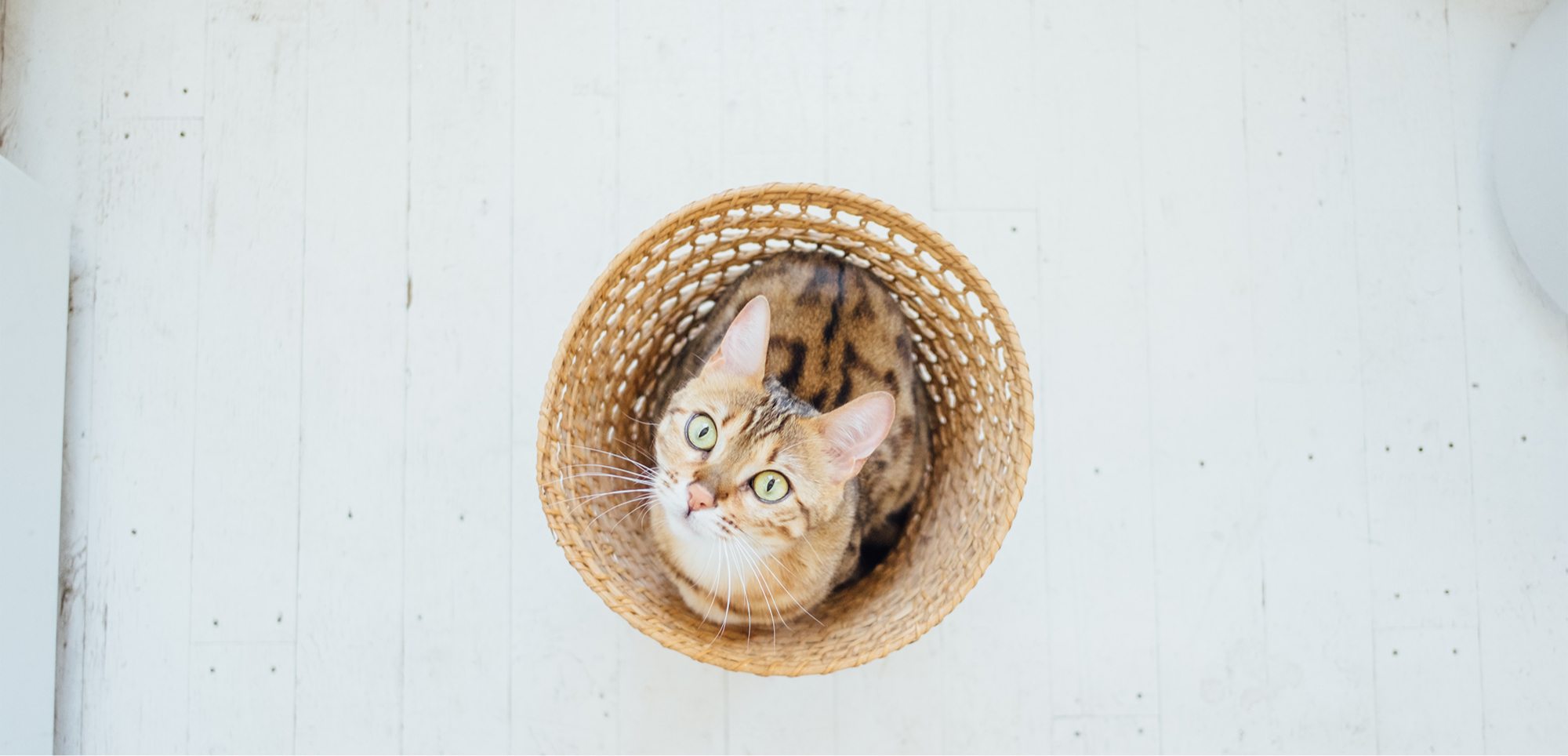Cat Flu
Feline Upper Respiratory Infection (URI) ‘Cat Flu’
What is cat flu?
Cat flu is similar to the common cold in humans. It’s caused by viruses that are often activated by stressful environments and situations (such as an animal coming into a shelter).
The severity of cat flu varies between individuals. In some cases, it can be life-threatening, particularly in kittens, and in adult cats with underlying illnesses, or when complicated by a secondary bacterial infection, lack of nutrition and dehydration.
What are the signs of cat flu?
If your cat develops cat flu, you may see some of the symptoms below:
- Sneezing
- Runny or congested nose
- Red, swollen and runny eyes or squinting
- Coughing
- Sores (ulcers) on the tongue, lips, nose or roof of the mouth
- Lack of appetite
- Increased body temperature (fever)
- Lethargic or decreased energy
- Increased hiding
What should I do if my cat develops signs of cat flu after adoption?
Some cats only become sick with cat flu after they have been adopted into their new home. This is because the 2-10 day incubation period (time from infection to when signs develop) of the underlying virus is longer than the amount of time a cat usually spends in SPCA care.
If your new cat develops signs of cat flu you should:
- Provide a low-stress room for the cat to rest, adapt to his/her new environment and recover.
- Make sure the cat is eating. Cats can’t smell their food when their nose is congested so to encourage eating offer lightly warmed wet (canned) cat or kitten food.
- Gently clean discharge from nose and eyes with a clean, warm, moist cloth at least once daily.
- Administer any prescribed medications as directed by your veterinarian.
When do I need to see a veterinarian?
Contact your veterinarian if your cat/kitten has any of the following signs:
- Not eaten for more than 24 hours
- Sore looking (red, swollen, runny), partially closed or squinting eye(s)
- Green or yellow discharge from the nose
- Difficulty breathing, especially panting or breathing through an open mouth
- Depressed or unresponsive
- Vomiting or diarrhoea that lasts more than 24 hours
- Little or no improvement after one week
How is Cat Flu spread?
There are a number of highly contagious, infectious diseases that can be the primary cause of cat flu. The main ones we see at SPCA are Feline Herpesvirus-1 (FHV-1), and Feline Calicivirus (FCV).
Cats showing signs of cat flu are the biggest source of infection, but some cats can appear healthy while still carrying the viruses (we call these cats 'carriers'). Both unwell and carrier cats shed virus particles in the discharge that comes from their nose and eyes and in their saliva. These virus particles can infect other cats either through cat-to-cat contact (direct contact) or contact with the virus carried on an object in the environment (indirect contact). The virus particles are able to survive in the environment for up to 10 days and can be spread by contact with infected food bowls, toys, bedding, or on people's clothing after touching an infected cat.
How is cat flu treated?
The causes of cat flu are viral, so treatment involves giving the cat or kitten time to allow its immune system to clear the body of the virus and may include supportive medication such as pain relief and eye drops. Sometimes antibiotics will also be used treat secondary bacterial infections. With supportive care and rest in a quiet, calm place (ideally a loving home) most cases resolve in 7-10 days.

What do I need to know about adopting a cat with cat flu?
If the cat you are adopting from SPCA had cat flu upon entry, developed cat flu, or was exposed to cat flu (e.g. siblings were treated for cat flu), during their stay at SPCA you will be made aware of this. We recommend that if you are at all concerned about the health of your newly adopted cat that you visit your veterinarian without delay.
It is important to know that once a cat has recovered, the virus that caused cat flu can still be shed by the cat for months to even years. There is a chance your cat may have a relapse of cat flu at times of stress and may require more veterinary visits and treatments than an average cat, but when vaccinations are kept up to date, relapses are usually minor.
Is there a risk to other cats in my household?
Cats with cat flu can live in house-holds with other non-infected cats, but due to the contagious nature of the viruses, we recommend you ensure the other cats in your household are up to date with vaccinations before introducing this cat.
Stress and the environment
Because stress can sometimes play a role in re-activing the viruses that lead to Cat Flu, every effort should be made to keep the cat as stress free as possible. SPCA Centre staff can provide you with additional advice regarding low-stress introductions and you can refer to our website for extra tips Bringing your new cat home.
If you have a multi-cat household be sure to have ample resources available to avoid conflict between cats. This includes having multiple litter trays (we recommend one per cat and one extra), food and water bowls, beds, hiding places, vertical space and enrichment items (e.g. scratching posts).
The cat I’m adopting still has signs of cat flu - why does SPCA adopt out cats that are not fully recovered?
Cat flu is strongly associated with stress and the shelter environment is a very stressful environment for any cat. For some cats, symptoms of cat flu may never go away while the animal remains in the shelter environment but will likely resolve once the cat is placed in a home setting or foster care. Each case will be discussed with the potential adopter individually.

